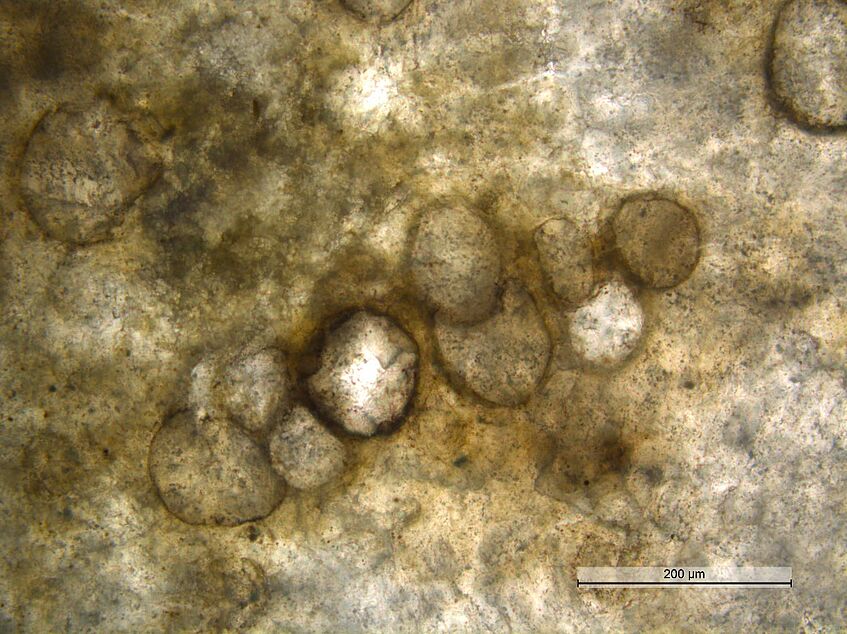Putative fossilized sulfur oxidizing bacteria from Devonian cold seeps, Morocco

A: Thioploca bacteria use filaments for vertical transport of nitrate. B: Beggiatoa mats and filaments inhabiting the oxic – anoxic boundary and store nitrate in times of low nutrient supply. C: Thiomargerita taking up nitrate during suspension of sediment (after Schulz & Jörgensen, 2001).
Research Team
Daniel Smrzka
Jennifer Zwicker
Jörn Peckmann
The colorless sulfide-oxidizing bacteria are important agents in the marine sulfur cycle, and may have been so since the Precambrian.
The genera Thiomargerita, Thioploca, and Beggiatoa are all members of the colorless sulfur-oxidizing bacteria, and are among the largest unicellular organisms known on Earth.
Today, these bacteria inhabit shallow seafloor sediments where their metabolism couples the carbon, sulfur and nitrogen cycles. At modern cold methane seeps, where hydrocarbon compounds are emitted from deeper organic-rich sediments to bottom waters, sulfur oxidizing bacteria form large microbial mats that utilize dissolved reduced sulfide and oxidize it to elemental sulfur and sulfate using molecular oxygen derived from seawater.
This process has a profound impact on the distribution of dissolved chemical species, microbial ecology, and the stability of authigenic carbonate minerals.
The current project investigates putative Devonian microfossils of sulfur oxidizing bacteria from an ancient cold seep site from Morocco.

Thin section micrograph of putative fossils of giant sulfur oxidizing bacteria (© J. Peckmann).
